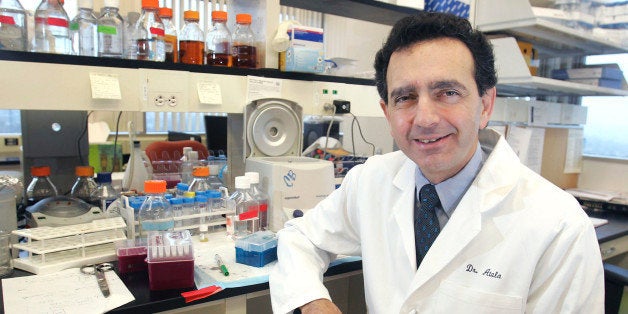
Laboratory-grown penises might sound like something from bad science fiction, but scientists are working to make them a reality. In fact, human trials of lab-grown penises may be coming soon, thanks in part to new funding from the Armed Forces Institute of Regenerative Medicine.
"The goal is to conduct a clinical trial within the next four to five years," Karen Richardson, a spokesperson for the Wake Forest Institute for Regenerative Medicine, told The Huffington Post in an email.
Researchers at Wake Forest made headlines in 2009 for growing penile erectile tissue in a lab and building a "functional engineered solid organ" for rabbits, and now are making progress on a human version.
The penises could revolutionize the treatment of men with congenital abnormalities, penile cancer, and erectile dysfunction as well as those who lose their penises through injury.
Dr. Anthony Atala, the director of the Wake Forest institute and a leading researcher on the effort, said the process of growing a penis relies on a donated organ, which is stripped down to its basic structural cells. The structure then acts as a "scaffold" on which cells taken from the patient are grown until the organ is developed enough to be surgically attached.
"Think of it like a building,” Dr. James Yoo, one of Atala’s collaborators, told The Guardian. “If you remove all the furniture and the people, you’re still left with the main structure of the building. Then you replace the tenants with new ones. That’s the whole idea. It’s just that the building is a penis and the tenants are cells.”
As Engadget notes, this technique won't work for transgender men who choose gender confirmation surgery as "this method requires the use of the patient's own penile cells."
If replacement penises still sound a bit farfetched, it's worth noting that researchers have already successfully implanted lab-grown vaginas in four young women.
